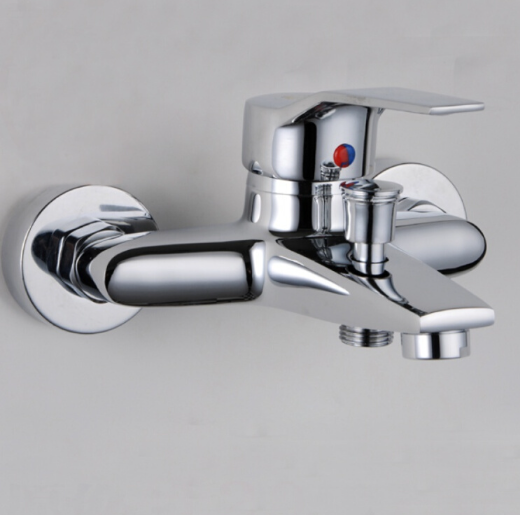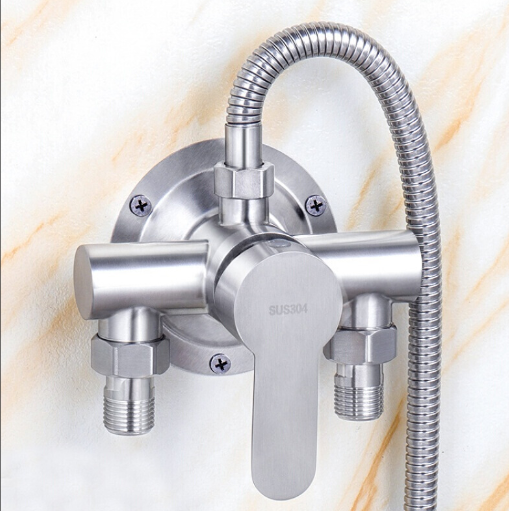Understanding the Impact of Mixer Selection in Commercial Projects
When undertaking large-scale commercial or residential projects, the choice between manual and thermostatic mixers can significantly influence both user satisfaction and long-term operational costs. Thermostatic mixers have revolutionized temperature control in modern plumbing systems, offering precision and safety that traditional manual mixers often struggle to match. Making an informed decision requires careful consideration of multiple factors, from initial investment costs to long-term performance benefits.
The growing demand for sophisticated plumbing solutions has led to increased interest in thermostatic mixers, particularly in projects requiring multiple bathroom installations. These advanced fixtures not only enhance user comfort but also contribute to water conservation and energy efficiency – crucial considerations for any large-scale development.
Technical Aspects and Performance Features
Temperature Control Mechanisms
Manual mixers rely on user adjustment to achieve the desired water temperature, requiring a balance between hot and cold water inputs. This mechanical system, while simple and reliable, depends entirely on user sensitivity and experience. Thermostatic mixers, conversely, incorporate sophisticated temperature-sensing elements that automatically maintain the selected temperature, regardless of pressure fluctuations in the water supply system.
The thermostatic element, typically made of wax or bi-metallic strips, responds to temperature changes within milliseconds, ensuring consistent output temperature. This rapid response system makes thermostatic mixers particularly valuable in environments where temperature stability is crucial, such as healthcare facilities or luxury hotels.
Safety and Risk Management
Safety features represent a significant advantage of thermostatic mixers over their manual counterparts. These devices include built-in safety stops that prevent accidental scalding, automatically shutting off the hot water supply if the cold water fails. This protective mechanism is especially important in facilities serving vulnerable populations, such as schools, nursing homes, or hospitals.
Manual mixers, while adequate for basic applications, lack these automated safety features. Users must rely on their own judgment and reaction time to avoid temperature extremes, which can pose risks in high-traffic or specialized-care environments.
Cost Considerations and Return on Investment
Initial Purchase and Installation Costs
The upfront investment for thermostatic mixers typically exceeds that of manual mixers, leading some project managers to hesitate when considering large orders. However, this cost differential must be evaluated against long-term benefits and operational savings. Professional-grade thermostatic mixers often feature higher-quality components and more durable construction, potentially reducing replacement frequency.
Installation costs may also vary between the two types, with thermostatic mixers sometimes requiring more specialized expertise. However, modern thermostatic units are increasingly designed for straightforward installation, helping to minimize this cost difference.
Operational Efficiency and Maintenance
The superior temperature control of thermostatic mixers often results in reduced water and energy consumption. By eliminating the need for manual temperature adjustment and providing instant, accurate temperature control, these fixtures can significantly lower utility costs in large installations.
Maintenance requirements and associated costs should also factor into the decision-making process. While thermostatic mixers contain more sophisticated components, their precise operation often results in less wear and tear from user adjustment. Regular maintenance schedules for both types should be considered when calculating total ownership costs.

Application-Specific Considerations
Commercial and Institutional Settings
In commercial environments, thermostatic mixers often prove advantageous due to their consistency and safety features. High-traffic areas such as gym facilities, hotels, and office buildings benefit from the reliable performance and reduced risk of temperature fluctuations. The ability to preset temperatures also helps maintain compliance with safety regulations and reduces the likelihood of user error.
Manual mixers might be more suitable for less demanding commercial applications where budget constraints are primary concerns and precise temperature control is less critical. However, the increasing focus on user comfort and safety often justifies the investment in thermostatic solutions.
Residential Development Projects
For residential developments, the choice between manual and thermostatic mixers often depends on the project's positioning and target market. Luxury developments typically favor thermostatic mixers for their superior performance and perceived value. The enhanced user experience and safety features can be strong selling points for potential buyers or tenants.
Mid-range developments might opt for a mixed approach, installing thermostatic mixers in primary bathrooms while using manual mixers in secondary spaces. This strategy can help balance cost considerations while still providing premium features where they matter most.
Future-Proofing and Sustainability
Energy Efficiency and Water Conservation
Thermostatic mixers contribute significantly to water conservation efforts by eliminating the need for temperature adjustment periods. This precise control can result in substantial water savings across large installations, supporting environmental initiatives and reducing utility costs. The consistent temperature control also means less energy waste from unnecessary hot water use.
While manual mixers can still achieve reasonable efficiency levels, they rely heavily on user behavior. In large-scale installations, the cumulative impact of individual user adjustments can lead to significant water and energy waste over time.
Technology Integration and Smart Building Compatibility
Modern thermostatic mixers increasingly offer compatibility with building management systems and smart home technology. This integration capability can provide valuable data on water usage patterns and help optimize system performance. The ability to monitor and adjust settings remotely can be particularly beneficial in large installations.
Manual mixers, while simpler in design, may limit future upgrade options as building automation becomes more prevalent. Projects aiming for long-term relevance should consider how mixer selection might impact future technology integration possibilities.
Frequently Asked Questions
How long do thermostatic mixers typically last compared to manual mixers?
Thermostatic mixers generally offer a lifespan of 15-20 years with proper maintenance, comparable to high-quality manual mixers. However, their sophisticated components may require more specific maintenance protocols to maintain optimal performance throughout their service life.
What maintenance requirements should be considered for large-scale installations?
Regular maintenance for thermostatic mixers includes annual cleaning of filters, checking valve function, and calibrating temperature settings. Manual mixers typically require simpler maintenance but may need more frequent cartridge replacements due to wear from regular adjustment.
Can thermostatic mixers be retrofitted into existing manual mixer installations?
Most modern thermostatic mixers are designed to fit standard plumbing configurations, making retrofitting possible in most cases. However, the installation should be assessed by a qualified professional to ensure compatibility with existing water pressure and piping systems.
What are the key factors affecting the return on investment for thermostatic mixers?
The ROI for thermostatic mixers is influenced by factors including energy savings, water conservation, reduced maintenance needs, and improved user safety. In high-use environments, these benefits often justify the higher initial investment within a few years of installation.
Table of Contents
- Understanding the Impact of Mixer Selection in Commercial Projects
- Technical Aspects and Performance Features
- Cost Considerations and Return on Investment
- Application-Specific Considerations
- Future-Proofing and Sustainability
-
Frequently Asked Questions
- How long do thermostatic mixers typically last compared to manual mixers?
- What maintenance requirements should be considered for large-scale installations?
- Can thermostatic mixers be retrofitted into existing manual mixer installations?
- What are the key factors affecting the return on investment for thermostatic mixers?


